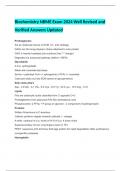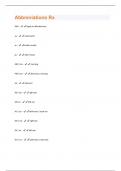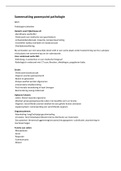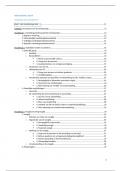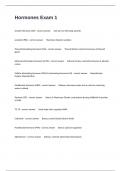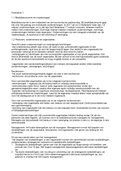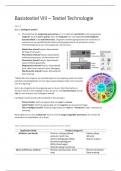Exam (elaborations)
Biochemistry NBME Exam 2024 Well Revised and Verified Answers Updated
- Course
- Institution
Biochemistry NBME Exam 2024 Well Revised and Verified Answers Updated Proteoglycans Act as molecular sieves in ECM, CT, and cartilage GAGs are the long polysacc chains attached to core protein GAG is heavily hydrated and cushions (has "-" charge) Degraded via lysosomal pathway (defect = MPS)...
[Show more]
